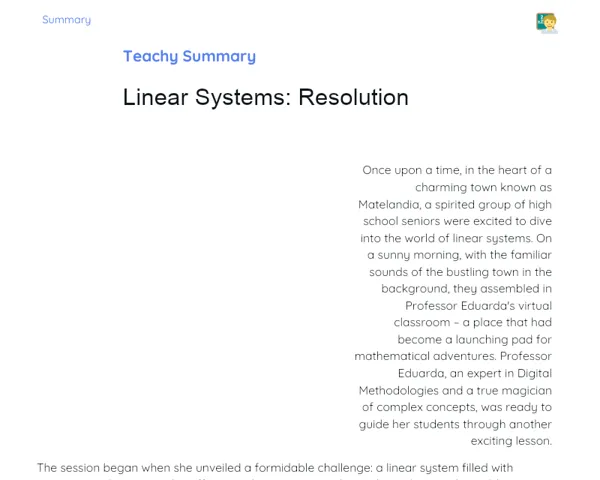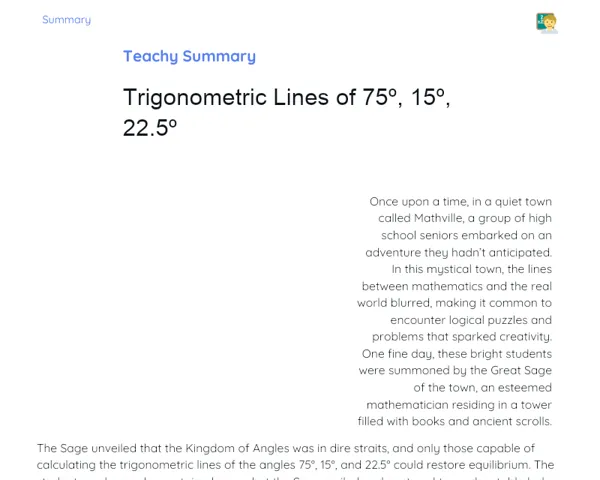Objectives
1. 📏 Understand and apply the property of mathematical equality by performing the same operations on both sides of an equation.
2. 📏 Develop critical thinking skills when analysing and solving equalities, observing how operations affect the final result.
Contextualization
Did you know that the concept of balancing an equation by doing the same operations on both sides isn't just a mathematics thing? It’s also crucial in criminal investigations and even in computer programming! This principle, often referred to as the 'law of balance', is key in ensuring accuracy and fairness in various processes, highlighting just how much maths is woven into our daily lives, often without us realising it.
Important Topics
Property of Equality
In mathematics, the property of equality tells us that if two expressions are equal, adding or subtracting the same number on both sides of the equation keeps the equality intact. This property is essential for working with equations and solving more complicated mathematical problems. For instance, if we have 3 = 3, adding 2 to both sides gives us 5 = 5, holding the equality true.
-
Addition and Subtraction: The property of equality allows for adding or subtracting the same number to both sides of an equation, making it easier to simplify equations or verify solutions.
-
Application in Equations: This property is key to solving linear and quadratic equations, isolating variables, and finding solutions.
-
Principle of Balance: The concept of balance in mathematics, where operations must be applied symmetrically to maintain equality, is fundamental in developing students' mathematical reasoning.
Commutativity and Associativity
These arithmetic properties come into play when performing operations on both sides of an equation to uphold equality. Commutativity tells us that the order of numbers won’t change the outcome of addition or multiplication. For example, 2 + 3 is the same as 3 + 2. Associativity indicates that how we group numbers in addition or multiplication won’t affect the result. For instance, (2 + 3) + 4 is the same as 2 + (3 + 4).
-
Usage in Equations: Students can utilise these properties to rearrange terms in a way that simplifies solving.
-
Application in Real Contexts: Grasping these properties helps students see mathematics in everyday scenarios, like calculating change or adjusting recipes.
-
Consolidation of Concepts: Practising commutativity and associativity strengthens foundational operations and sets students up for more advanced topics.
Distributivity
The distributive property explains that multiplication distributes over addition or subtraction. This means that multiplying a number by a sum (or difference) of two other numbers is the same as multiplying each of the numbers separately and then adding (or subtracting). For example, 2 × (3 + 4) = 2 × 3 + 2 × 4.
-
Importance in Simplification: This property is vital for simplifying algebraic expressions and more complex equations.
-
Application in Models: Many mathematical and scientific models leverage distributivity to accurately depict real-life situations.
-
Development of Reasoning: Understanding and applying distributivity bolsters students' logical thinking.
Key Terms
-
Mathematical Equality: The relationship between two expressions of the same value, represented by an equals sign (=).
-
Property of Equality: The ability to add or subtract the same number from both sides of an equation without changing its equality.
-
Commutativity: A property stating that the order of numbers doesn’t impact the result of addition or multiplication operations.
-
Associativity: A property indicating that the outcome of an operation isn’t reliant on how numbers are grouped.
-
Distributive Property: The principle stating that multiplication distributes over addition and subtraction.
For Reflection
-
How might the property of equality be used to check if the outcome of a mathematical operation is correct? Provide examples.
-
Why is it significant to understand the properties of commutativity and associativity when working with mathematical equations?
-
In what ways is the principle of distributivity reflected in everyday situations, or in fields outside of mathematics?
Important Conclusions
-
Today we delved into the intriguing property of equality in mathematics, uncovering how applying the same operations on both sides of an equation sustains equality.
-
We highlighted the essential roles played by commutativity, associativity, and distributivity—fundamentals not just for solving equations but also for enriching our comprehension of the world.
-
These concepts extend beyond theory; they find practical usage in numerous everyday decisions, aiding problem-solving and more informed choices.
To Exercise Knowledge
Create your own equality puzzle! Use cards or paper to jot down a series of equalities where the addition, subtraction, multiplication, or division of a number on both sides maintains true equality. Swap your puzzles with a friend or family member and see who can solve them the quickest.
Challenge
Equation Detective Challenge: Try to determine which operations were performed at each step to transform the equation 2x + 3 = 11 into x = 4. Document each step and explain your choices for the operations used.
Study Tips
-
Engage with online algebra and equation games to practice the properties learnt. Websites like Khan Academy provide interactive resources that make learning enjoyable and effective.
-
Craft flashcards with the properties of equality, commutativity, associativity, and distributivity to reinforce these concepts. Regular reviews keep the information fresh.
-
Consider applying these properties in your daily life, such as sharing a bill or checking a shopping list, to observe how deeply maths is ingrained in our everyday choices.



